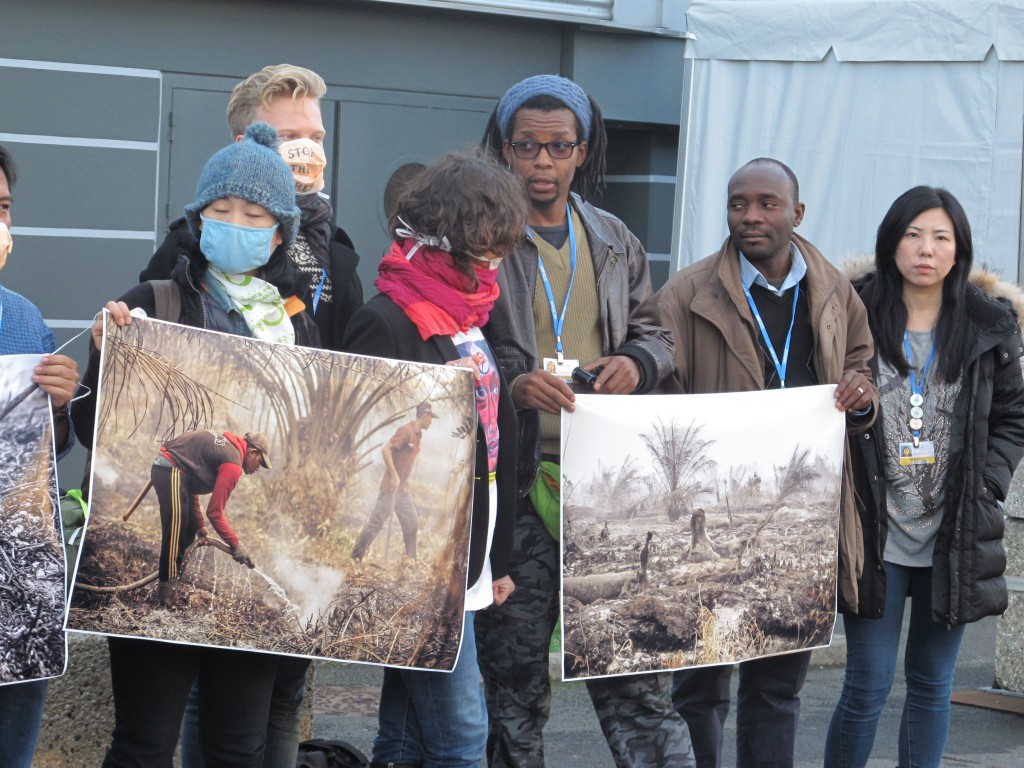
Anyone with a passing interest in climate change will know how intractably difficult international negotiations have proved in the past, reaching a low-point at Copenhagen.
Whatever the outcome this week in Paris, the preponderance of ‘square brackets’ in the latest draft document (signifying those issues still to be resolved) indicates that the task remains troublesome. While a scientific consensus on the basics of climate change has been established, a political consensus has been less forthcoming1,2. One reason for this is that climate change is not a uniquely scientific issue, but a public issue involving science3. We need to explore the public meanings of climate change, and allow these meanings to inform the debate around political responses to climate change. I suggest that one way to scratch the surface of such meanings is through the vibrant use of Twitter around the COP21 event4.
In this post, I look at tweets containing the string ‘COP21’ collected by my colleagues Kim Holmberg and Timothy D Bowman between October 3rd and December 3rd, focusing on the hashtags used within these tweets in order to get a glimpse of the public meanings to be found ‘under the hood’ of climate change.
Following our analysis of Twitter usage around the publication of an IPCC report in 20135, we can identify two broad ways in which hashtags are being used. Firstly: to highlight public meanings of climate change in an attempt to mobilise public support. Secondly: as a means of bringing climate change to the attention of pre-existing publics with broader concerns. Many of these hashtags express familiar, enduring meanings of climate change, such as #science #environment #energy #renewables and #CO2. But here I will focus some less familiar meanings that say something about the knot of social issues that underpin climate change.

First, #KillerPalm (10,872 mentions in conjunction with ‘COP21’), has been used to raise concerns over unsustainable palm oil production methods that have negative impacts on local environments. Such methods contribute to local deforestation as ground is cleared for oil palm plantations. While the case against such actions may appear straightforward when looking at carbon emissions, complex supply chains and a difficult balance between supporting smallholders and maintaining sustainability standards points to a complex intermingling of social, economic and environmental issues6. Indeed, some commentators may question why relatively poor farmers from the global south should stifle their own development when the global north has long since converted the bulk of its forests to other uses.
This points to a second public meaning being attached to COP21 on Twitter: #climatejustice (3629). Climate justice is one of the most persistent challenges to technocratic interpretations of climate change. Agarwal and Narain argued in 1991, that instead of merely counting carbon we should differentiate between the ‘luxury emissions’ of developed countries and the ‘survival emissions’ of developing countries7. Failing to do so lets developed countries off the hook for their share of the blame vis-à-vis climate change, a situation described by Agarwal and Narain as “environmental colonialism”7. Such arguments further complicate the task of international agreement, but continue to be a raised within the tweets in our sample8 as well as maintaining a presence within the thicket of square brackets in Paris9.
#COP21 has also been used to introduce climate change to broader, pre-existing publics. Some of these are familiar from our IPCC study5: #cdnpoli (7273) and #auspol (6252) demonstrate how climate change continues to be a high profile political issue in Canada and Australia (perhaps related to their fossil fuel reserves) in a way it appears not to be in the UK. However, two new publics are visible within our sample. The proximity of the #ParisAttacks (6326) to COP21 prompted tweeters to link the two in multiple ways; for example, to express climate talks as a means to greater peace, to describe COP21’s continuation as an act of defiance, to highlight the constraints placed on climate change demonstrations in Paris after the attacks, or to argue that tackling terrorism should take priority over climate change. While these views are diverse, they share a recognition that climate change is indeed a public issue entwined with fundamental concerns over democracy.
Contrasting with #ParisAttacks, some tweeters chose to connect COP21 to #YearInSpace (3178), a hashtag used by astronaut Scott Kelly for photos of Earth taken from the International Space Station10. This echoes the role of the original ‘blue marble’ photos of the Earth in the rise of environmentalism11,12, and ties in with the global view that often frames discussions of climate change13. While this perspective may distance us from many of climate change’s public meanings, the photos provide a source of optimism both through their beauty and how they remind us of the possibility of advancement through science and technology.
Studying tweets does not easily provide us with a ‘deep dive’ into the public meanings of climate change, particularly in the brief commentary offered here. However, they do provide insight into how publics using social media interpret climate change, and a means of comparing these meanings to those expressed within the corridors of COP21.
REFERENCES
- Machin, A. Negotiating Climate Change: Radical Democracy and the Illusion of Consensus. (Zed Books, 2013).
- Pearce, W. Scientific data and its limits: rethinking the use of evidence in local climate change policy. Evid. Policy J. Res. Debate Pract. 10, 187–203 (2014).
- Wynne, B. Further disorientation in the hall of mirrors. Public Underst. Sci. 23, 60–70 (2014).
- Pearce, W., Brown, B., Nerlich, B. & Koteyko, N. Communicating climate change: conduits, content, and consensus. Wiley Interdiscip. Rev. Clim. Change 6, 613–626 (2015).
- Pearce, W., Holmberg, K., Hellsten, I. & Nerlich, B. Climate Change on Twitter: Topics, Communities and Conversations about the 2013 IPCC Working Group 1 Report. PLoS ONE 9, e94785 (2014).
- Coca, N. Making Zero-Deforestation Commitments Work. Triple Pundit: People, Planet, Profit (2015). at <http://www.triplepundit.com/2015/12/making-zero-deforestation-commitments-work/>
- Agarwal, A. & Narain, S. Global Warming in an Unequal World: A Case of Environmental Colonialism. (Centre for Science and Environment, 1991).
- teleSUR English. #COP21: Richest 10% guilty of 50% of carbon emissions #ClimateJustice http://bit.ly/21vy4Uo pic.twitter.com/dZlQuAjemW. @telesurenglish (2015). at <https://twitter.com/telesurenglish/status/672194641916272640>
- Revkin, A. Article 3 (Mitigation), no surprise, is among the sections of the #COP21 final draft thickest with [brackets]. pic.twitter.com/BPpn8Qklbx. @Revkin (2015). at <https://twitter.com/Revkin/status/673962717682786305>
- Kelly, S. Oceans on our #EarthRightNow. You are the blue in our big blue marble. #COP21 #YearInSpace pic.twitter.com/q4hpHebiBp. @StationCDRKelly (2015). at <https://twitter.com/StationCDRKelly/status/672501614637359104>
- Poole, R. Earthrise: How Man First Saw the Earth. (Yale University Press, 2008). at <http://yalepress.yale.edu/yupbooks/book.asp?isbn=9780300137668>
- McKibben, B. What NASA’s Blue Marble Photo Reveals About Climate Change. Mother Jones (2012). at <http://www.motherjones.com/environment/2012/02/bill-mckibben-nasa-blue-marble-photo-climate-change>
- Miller, C. A. in States of Knowledge: The Co-Production of Science and the Social Order (ed. Jasanoff, S.) 46–66 (Routledge, 2004).